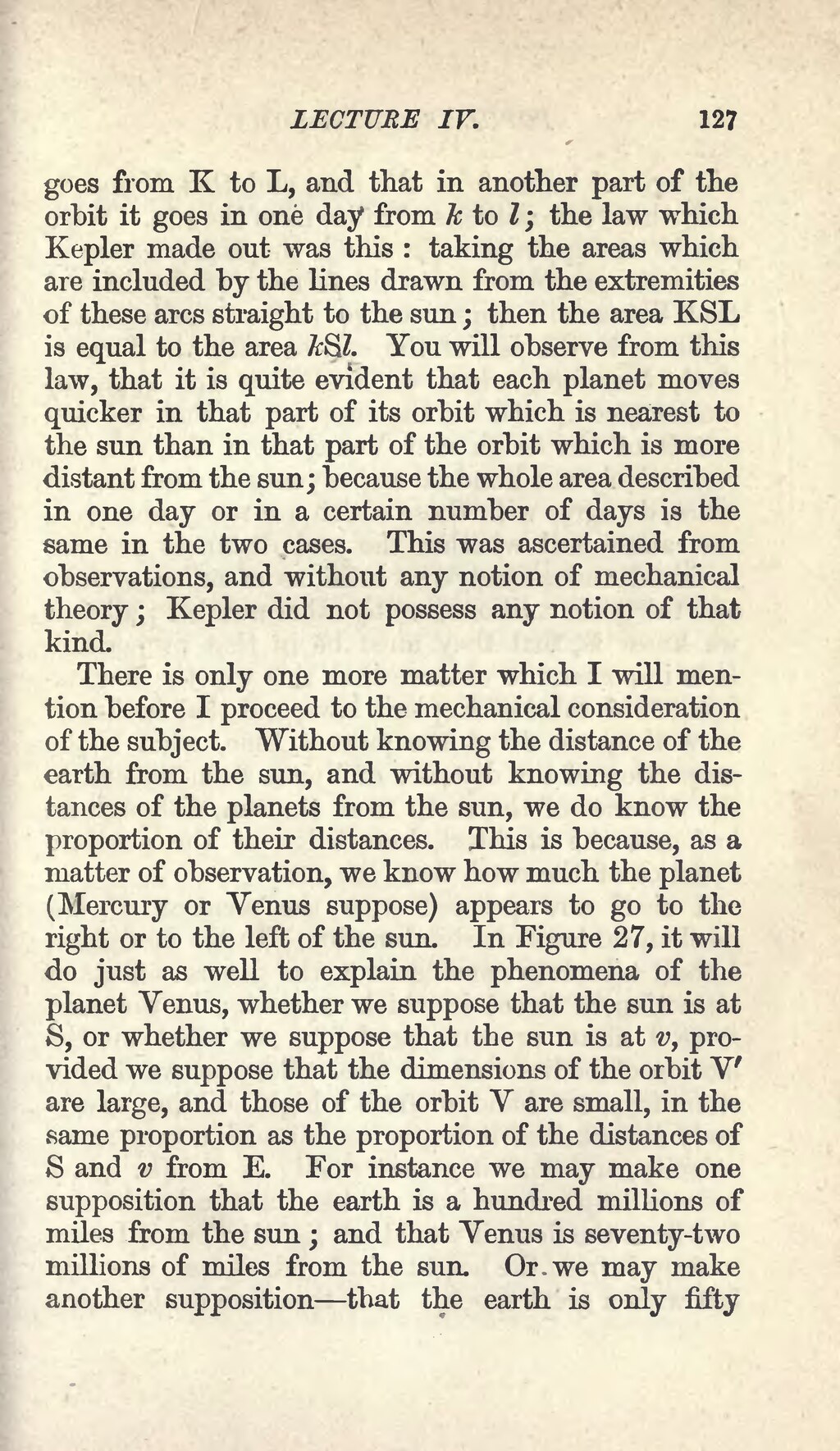goes from K to L, and that in another part of the orbit it goes in one day from k to l; the law which Kepler made out was this: taking the areas which are included by the lines drawn from the extremities of these arcs straight to the sun; then the area KSL is equal to the area kSl. You will observe from this law, that it is quite evident that each planet moves quicker in that part of its orbit which is nearest to the sun than in that part of the orbit which is more distant from the sun; because the whole area described in one day or in a certain number of days is the same in the two cases. This was ascertained from observations, and without any notion of mechanical theory; Kepler did not possess any notion of that kind.
There is only one more matter which I will mention before I proceed to the mechanical consideration of the subject. Without knowing the distance of the earth from the sun, and without knowing the distances of the planets from the sun, we do know the proportion of their distances. This is because, as a matter of observation, we know how much the planet (Mercury or Venus suppose) appears to go to the right or to the left of the sun. In Figure 27, it will do just as well to explain the phenomena of the planet Venus, whether we suppose that the sun is at S, or whether we suppose that the sun is at v, provided we suppose that the dimensions of the orbit V' are large, and those of the orbit V are small, in the same proportion as the proportion of the distances of S and v from E. For instance we may make one supposition that the earth is a hundred millions of miles from the sun; and that Venus is seventy-two millions of miles from the sun. Or. we may make another supposition—that the earth is only fifty
